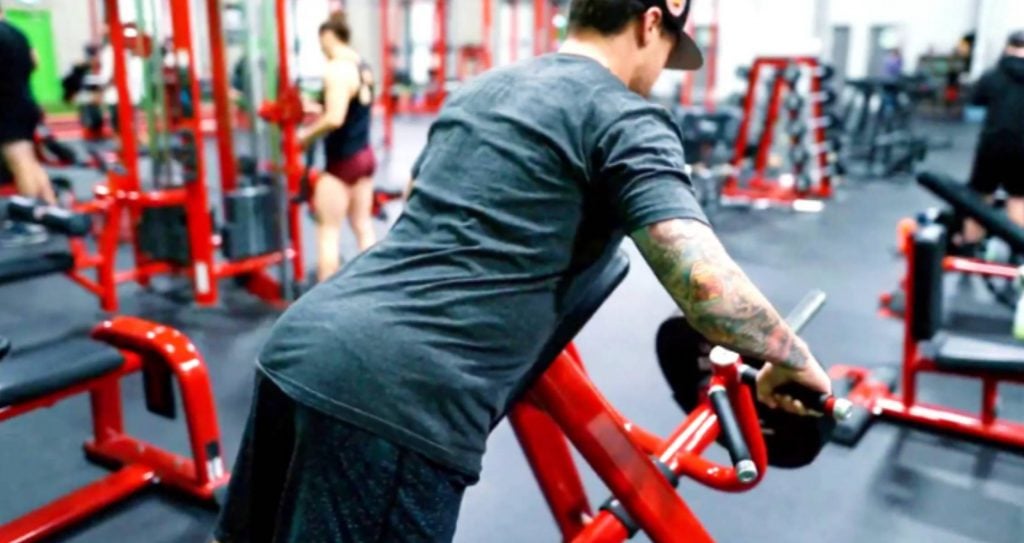A bench for chest support during rows stabilizes the upper body muscles, facilitating more effective back contraction.
Rowing is one of the quintessential workouts to enhance strength and foster back growth. Numerous rowing exercises can be executed using various equipment, including resistance bands, free weights (dumbbells, barbells, and kettlebells), and machines. While these variations target different muscle groups, the dumbbell (DB) chest-supported row is effective. This exercise, which can be performed on a bench or any platform that supports the chest, is particularly beneficial. Research indicates that training on a stable surface leads to enhanced muscle activation and response (1).
This article delves into the significance of the DB chest-supported row, emphasizing the specific upper-body muscle groups it targets. It also explores the advantages of this exercise and presents alternative options that are equally effective. Additionally, readers will find a detailed, step-by-step guide on how to execute this exercise proficiently.
Technique & Muscles Worked
The DB chest-supported row works on your upper body. It focuses on your lats, traps, rhomboids, and biceps. The shoulders and core muscles, like the abs and obliques, act as stabilizers during this exercise.
The DB chest-supported row is a compound pull exercise that uses a flat incline bench surface for chest support. Your go-to equipment for this exercise is dumbbells, and you should remember to keep your chest flat on the bench during it. Below are step-by-step instructions.
- Set the bench at an incline angle of about 45 degrees, and grab a pair of dumbbells with a neutral grip.
- Lay flat on the bench with your chest, driving your feet into the floor. Hold the weights by the sides, with your palms facing each other. This is your starting position.
- Next, brace your glutes and core muscles and pull your shoulder blades back, squeezing them.
- Slowly pull your elbows up as high as you can. In this position, pause for about 2 seconds.
- Then, slowly lower the dumbbells to the starting position to complete the rep.
- Repeat this movement for as many reps as you desire.
Benefits
This exercise is particularly effective for strength training and developing a solid back. The DB chest-supported row uses a bilateral pull force to execute, which improves overall strength (2). Below is a list of its benefits.
Builds Muscle Mass
The DB chest-supported row is an effective exercise for building muscle mass, especially in your back and arms. This exercise allows the convenience of adding more load via heavier dumbbells, which leads to more muscle growth in the biceps, lats, and traps.
Stabilization & Balance
Performing this exercise on a bench helps with full-body stabilization and balance, eliminating extra body movement. As a result, DB chest-supported rows focus more on the target muscles, activating and increasing the tension there to make more strength gains.
Improves Posture
Performing the DB chest-supported row strengthens your back, which improves your posture. Keeping your chest flat on the bench during this routine is essential, as it reinforces your back muscles and helps prevent injuries.
Carryover to Other Exercises
Performing the DB chest-supported row strengthens the back and biceps. This enhances your pulling power, which improves your form in other exercises like pulldowns and deadlifts.
Other Back Workouts
The DB chest-supported row is a strength training exercise. It builds the arms and a defined, strong back. However, this shouldn’t be the only exercise you add to your back workouts to avoid a plateau. Below are other alternatives to the DB chest-supported row that help build back and arm muscles.
Lat Pulldowns
This exercise explicitly targets the lat muscles in your back. Other secondary muscles include traps, rhomboids, and biceps. Lat pulldowns help you build your back, increase your strength, and improve your posture.
Deadlifts
The deadlift is a weight training exercise that works on the lats, traps, core, glutes, and hamstrings. It’s effective for building muscle mass and can be done with a barbell, kettlebell, or dumbbell. It’s regarded as one of the best compound movements for improving overall strength.
Band Pull Aparts
The band pull-apart is an isolation exercise using resistance bands that target the rear delts, rhomboids, and traps. Studies have shown that it effectively rehabilitates back and shoulder injuries (3).
FAQs
How do DB chest-supported rows work?
DB chest-supported rows work the traps, lats, rhomboids, and biceps. The shoulders and core muscles, like the abs and obliques, act as stabilizing muscles during this exercise.
Is the chest-supported row safe?
Yes, the DB chest-supported row is safe. Always have bench support when performing this exercise, as this reduces the chance of straining the back. Just remember to brace your core.
Are chest-supported rows good for the lats?
Yes, DB chest-supported rows are suitable for building your lats. You can do this exercise on a bench, eliminating the need for support and stability. The support from the bench also isolates the lats and other target muscles, building bigger and stronger upper body posterior chain muscles.
Follow us on Instagram, Facebook, and Twitter for more exercise guides!
References
- Kohler, J. M., Flanagan, S. P., & Whiting, W. C. (2010). Muscle activation patterns while lifting stable and unstable loads on stable and unstable surfaces. Journal of strength and conditioning research, 24(2), 313–321. https://doi.org/10.1519/JSC.0b013e3181c8655a
- Liao, K. F., Nassis, G. P., Bishop, C., Yang, W., Bian, C., & Li, Y. M. (2022). Effects of unilateral vs. bilateral resistance training interventions on measures of strength, jump, linear and change of direction speed: a systematic review and meta-analysis. Biology of sport, 39(3), 485–497. https://doi.org/10.5114/biolsport.2022.107024
- Fukunaga, T., Fedge, C., Tyler, T., Mullaney, M., Schmitt, B., Orishimo, K., McHugh, M., & Nicholas, S. (2022). Band Pull-Apart Exercise: Effects of Movement Direction and Hand Position on Shoulder Muscle Activity. International journal of sports physical therapy, 17(3), 400–408. https://doi.org/10.26603/001c.33026








